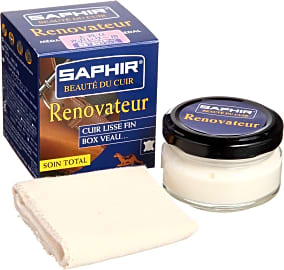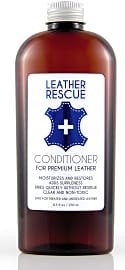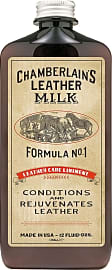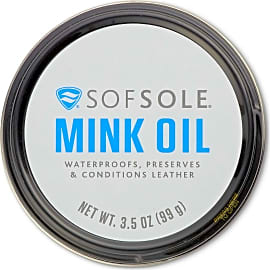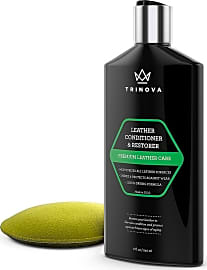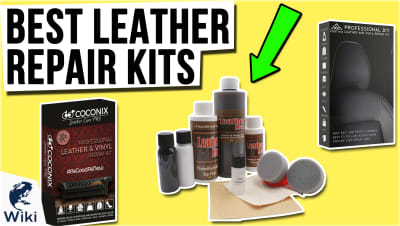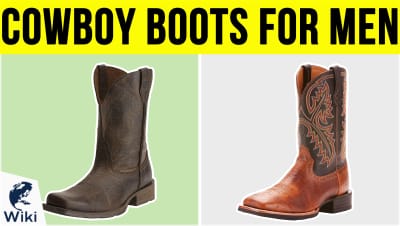The 10 Best Leather Conditioners

This wiki has been updated 42 times since it was first published in February of 2016. Got a leather jacket or pair of boots that have seen better days? Try applying one of these high-quality conditioners. They're formulated to smooth cracks and lines, add moisture, and protect all tanned hide items from future damage, whether from sun, water, or abrasive surfaces. Most work equally as well on auto upholstery, handbags, furniture, and sporting goods, too. When users buy our independently chosen editorial recommendations, we may earn commissions to help fund the Wiki.
Editor's Notes
October 22, 2020:
Some of the bestselling leather conditioners on the market, like Leather Honey and Bickmore Bick 4, have been perfected and in use for decades, which means many of our choices will continue to perform year after year. That being said, there are still new formulas coming out that are best suited to specific uses, and we curated the best of both here, so you'll find solutions that can attend to almost any leather good you can imagine.
Make sure to understand just how far a conditioner can go to restore woebegone pieces, though. Many can work wonders on small cracks, sun-faded color, light peeling, scuffs, and scratches, but they will not completely revive something that has been rigorously used and abused without any care or maintenance. If you're looking for something to tend to larger issues, consider a leather repair kit.
When auto-detailing favorite Lexol Original Formula became unavailable we tapped Chemical Guys Sprayable to replace it. It uses a thoughtful formula to clean and nourish in one step and breaks down light dirt, grease, and body oils while protecting against sunlight damage. Regular maintenance with this option can replenish the preservatives and oils in upholstery that diminish over time without using petroleum or caustic chemicals. Take note that like TriNova Premium, it leaves behind a bit of a gloss, so lovers of matte finishes may want to steer clear.
We also brought on Otter Wax All-Natural at the expense of Venetian Imperial Balm, which is pigmented and therefore limited depending on what color you buy. Otter Wax is a solid all-around choice for restoring almost any kind of leather of any color, as frequently as you want. Since the bottle is only five ounces, it's best used for smaller pieces, although it's just as effective on furniture and other sizeable items, you'll just need a few bottles to get the job done.
November 07, 2019:
From cowboy boots to exotic leather belts, there is an item on this list to suit myriad conditioning needs, from softening, rejuvenating and darkening, to easing cracks, strengthening stitches, and creating a barrier that repels salts, petroleum, water, and more. We provided nontoxic selections as well as decades-old formulations created for protecting saddles and other goods that are exposed to harsh sunlight and rigorous use.
We said goodbye to Leather Shines and Lord Leather Care Softener to make way for Sof Sole Mink Oil, a handy little tin that works wonders on myriad leather types. It's an especially good choice for work boots, gloves, belts, and any other item that gets abused consistently by rough wear and the elements. It does not consist of 100% mink oil, rather, it contains around 15%, and then is mixed with other conditioning agents in a proprietary formula. We also added Obenauf's Heavy Duty, another great resource for people whose items come into consistent contact with bacteria and mold that eat away at leather. Since it was created for firefighters, it's well up to the task of offering tough, reliable protection.
If you're looking to revive car upholstery Lexol Original Formula is a detailer favorite, along with TriNova Premium. For fine shoes and luxury goods we'd recommend Venetian Imperial Balm and Saphir Renovateur, while Bickmore Bick 4, Leather Rescue Restorer, and Leather Honey are all excellent choices for worn furniture (among other uses, of course).
Special Honors
Schnee's Premium Leather Conditioner This premium conditioner from Schnee's provides odorless, waterproof, barnyard acid-proof, breathable protection for leather boots and other fine leather goods. It does not contain any animal byproducts or silicone to damage stitching, and readily absorbs into leather to rejuvenate and soften, as well as extend life and wearability. schnees.com
Beesbutter Balm This handmade, all-natural balm is a blend of beeswax and naturally-occurring oils and lipids that are safe for leather and your skin. Coming from a veteran-owned business and made in the United States, this conditioner uses a proprietary formula that can condition, restore, soften, and protect all genuine leather goods without added chemicals, dyes, perfumes, or petroleum. It also provides water-resistance and won't leave any strong odors behind. agedleatherpros.com
How To Choose A Leather Conditioner
For pretreating shoes, a jacket, or a bag that will likely be worn outside in inclement weather, look for a leather conditioner that adds waterproofing to your material.
Whether you are trying to restore a pair of well-worn cowboy boots after a ride across the range, or you are trying to bring the shine back to your Mont Blanc wallet, there is a leather conditioner out there that will serve your purpose. And in fact, sometimes the best way to use a leather conditioner is while a garment or accessory is brand new, as many leather conditioners are designed not to restore leather, but to protect it while breaking it in at the same time.
Before choosing a leather conditioner, you must know the types of leather to which it will be applied and have a general sense of their condition. Certain leather conditioners are suitable for dyed or color-treated leather, while others can easily leave permanently stained or darkened spots on certain types of leather. Some conditioners can be used on stiff leather, while others are perfect for softer varieties. Few leather conditioners can be used on suede, and then again a few are formulated especially for this type of product. Thus you must choose a leather conditioner based on the leather at hand.
If you are trying to restore cracked or dried out upholstery, be it inside an automobile or your home or office, look for a leather conditioner formulated with a rather thin viscosity that can be brushed all over the surface of the seating evenly. As you will need a fair amount of conditioner for this type of application, look for a moderately priced variety. And also look for long-lasting treatments: many leather conditioners can breathe new life into upholstery for as long as six months. You will appreciate the infrequency of these treatments, as they require leaving the upholstery untouched many hours or even an entire day following the application.
For pretreating shoes, a jacket, or a bag that will likely be worn outside in inclement weather, look for a leather conditioner that adds waterproofing to your material. The small investment of money and time you devote to applying a leather conditioner to your goods can help to greatly extend their life, keeping them looking newer and working better for much longer than the raw leather alone.
With smaller items such as a wallet, purse, or belt consider semisolid leather conditioners such as those made with a beeswax base. These products allow for extended polishing and can restore the as-new look glossier leather goods had before they were loved.
How To Use A Leather Conditioner
Quite often, the key to using a leather conditioner properly is to use it liberally. Most formulas are designed to be applied all over the surface of the garment, accessory, or upholstery in question, not merely on a few cracks or problem spots. Just be sure to wipe away excess conditioner left on the surface of the leather after letting it sit for an hour or two, and to let treated leather rest at least overnight before you again wear it, carry it, or sit on it, whatever the case may be.
An old t-shirt cut into strips works well both for applying leather conditioner and for wiping excess away.
Some leathers may quickly absorb a leather conditioner and may darken when so doing. If you're worried about permanently staining a piece of leather, try testing a small patch with a dab of the solution before applying it all over the material. More often than not, the leather will return to its proper color once the conditioner has been fully absorbed and has a chance to dry.
Always use the applicator that comes with a conditioner if one was included. Otherwise, using a clean and lint-free cloth is the best approach. An old t-shirt cut into strips works well both for applying leather conditioner and for wiping excess away. For treating cracks and worn spots on large upholstery or in vehicles where coating the entire surface is either unnecessary or impractical, you can deftly apply conditioner only where needed using a paintbrush. In this scenario, you should apply the formula conservatively and precisely, not liberally at all.
If you're trying to restore an old and/or worn pair of shoes or boots, make sure you thoroughly clean the footwear before you apply any leather conditioner, and allow the leather to dry fully before the treatment as well.
Keep in mind that some items, such as work boots, may be pretreated to resist moisture and strengthen them against damage. Goods such as these should not be treated with leather conditioners that are designed to soften them; doing so may actually cause more harm than good, undermining their rugged design.
The Brief And Burnished History Of Leather Conditioners
Many leather conditioners on the market today have been available for well over a hundred years. Some formulas even date back decades into the 19th-century and have seen little change in all those years. When a product is already performing its duty adroitly, there is little reason to alter its makeup, after all.
Leather conditioners were originally concocted to restore saddles and harnesses used with horses and other farm animals and implements. By regularly conditioning the leather, one could extend the working life of their gear. Many of the leather conditioners common in generations past used tallow rendered from animal fats as their base material. Mink oil was also a common ingredient used to make leather conditioners, a practice which led to the slaughter of untold thousands of animals.
In the 20th-century, many brands began to create leather conditioners using ingredients less harmful (or lethal) to animals, such as cocoa butter and almond oil and even lemon oil in mild concentrations. Many homemade leather conditioners use mild baby soaps and white vinegar, though experts recommend professional formulas.




